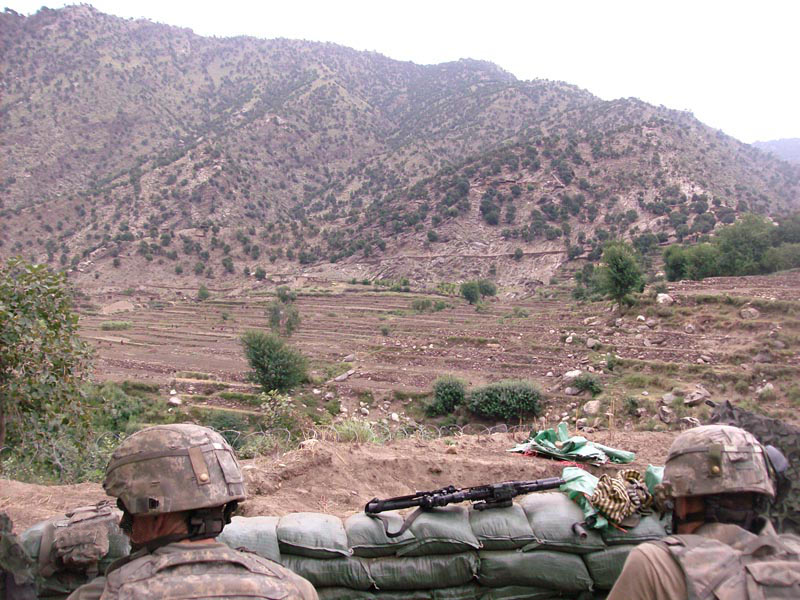The history of the Battle of Wanat

Soldiers were abmushed in the village of Wanat, set in the rugged terrain of a remote river valley. Photo courtesy 173rd Airborne Brigade Combat Team.
SUMMARY
The Battle of Wanat took place on July 13, 2008, in the Waygal Valley, Nuristan Province, Afghanistan. It involved around 200 Taliban insurgents attacking a small U.S. Army outpost manned by 49 U.S. soldiers and 24 Afghan National Army (ANA) soldiers. Nine U.S. soldiers lost their lives. Another 27 were wounded, marking it as one of the deadliest for American forces during the war.
Background and Preparations
In the weeks leading up to the battle, U.S. forces established a temporary outpost in the village of Wanat. The base was named Combat Outpost (COP) Kahler in honor of 1st Lt. Matthew Kahler. Kahler died earlier in the year in the same area. The soldiers were part of Chosen Company, 2nd Battalion, 503rd Parachute Infantry Regiment, 173rd Airborne Brigade Combat Team. They set up the COP in order to provide security for the construction of a new road and to facilitate development projects in the region.
The U.S. forces, led by 1st Lt. Jonathan Brostrom, were aware of the potential for a Taliban attack and had taken precautionary measures. These included establishing observation posts and defensive positions. However, service members faced several challenges. These included a delay in the delivery of materials to build proper defenses and limited air support due to the remote location of the COP.
The Battle
The Battle of Wanat began in the early morning hours of July 13, 2008. That’s when Taliban insurgents launched a coordinated attack on COP Kahler and its observation posts. The attackers used small arms, rocket-propelled grenades (RPGs), and mortars to target the U.S. and ANA forces. Insurgents infiltrated the village and came dangerously close to the COP. Additionally, they used civilian houses and other structures for cover.
Despite being outnumbered and facing an intense and sustained attack, the U.S. and ANA soldiers mounted a fierce defense. The soldiers fought back with small arms, machine guns and artillery support. They also called for air support from Apache helicopters and a B-1 bomber. The battle lasted for several hours, with both sides suffering heavy casualties.
Aftermath
In the aftermath of the battle, questions arose. They surrounded levels of preparation and the effectiveness of tactics used during the battle. A U.S. Army investigation into the incident revealed several factors that contributed to the high casualty rate. Insufficient intelligence on enemy forces played a significant role. So, too, did inadequate force protection measures and an overall lack of coordination between the various units involved.
The Battle of Wanat served as a stark reminder of the dangers and complexities of counterinsurgency operations in Afghanistan. The engagement highlighted the importance of strong intelligence, effective communication, and coordination between units, as well as the need for well-constructed and well-defended outposts.
Legacy of the Battle of Wanat
The Battle of Wanat is a testament to the bravery and resilience of the U.S. and ANA forces involved. The soldiers' actions serve as a powerful reminder of the sacrifices made by service members during the Afghan War. The incident has also been the subject of several books, articles, and documentaries. This ensures future military strategists will continue to learn from Wanat and those who died will not be forgotten.
SHARE
